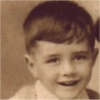 | Name: Kevin Jones
Overview: Kevin Jones` father worked in a Welsh mine, then joined the Royal Navy and worked his way up from sick berth attendant to Lieutenant Commander. Kevin went to various grammar schools in Navy ports and left at 18 to train as an accountant. He worked for several large companies, unhindered by his diabetes, but has had more problems in recent years. In 2002 his leg was amputated, but he had great help from the Limb Centre and now walks and drives with an artificial limb. He loves jazz, and is pictured with a statuette of a jazz musician.
Hits=6 |
|
| 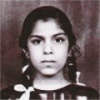 | Name: Bena
Overview: Bena was born in the Kigezi District of Uganda, the daughter of a wealthy businessman. She was diagnosed when nearly 12 and then shunned by children who thought diabetes was contagious. She lived on chapattis and spinach and a bitter vegetable juice thought to cure diabetes. When Idi Amin expelled Ugandan Asians in 1972, her family came to England, and she was delighted to be allowed to eat a wider range of food. She eventually married an Englishman and had two daughters. She works as an office administrator, in a social services department that supports disabled children.
There are also interviews with Bena`s daughter, Emma and her husband, Terry.
Hits=6 |
|
| 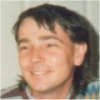 | Name: Philip Newick
Overview: Philip Newick comes from a working-class Bristol family which was greatly affected by redundancies in the aircraft industry. Determined to escape such insecurity, he did a degree and postgraduate work in chemical engineering. He worked for HJ Heinz until after diagnosis, when he was told that he could no longer work abroad. He then got a job nearer to his home in Birmingham and all his treatment has been in that city. He and his wife still weigh and measure all his food and he has few health problems - apart from an inability to detect the onset of hypos.
Hits=3 |
|
| 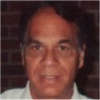 | Name: Tas Bokhari
Overview: Tas Bokhari`s parents were wealthy landowners in India. As Muslims, they were forced to migrate to Pakistan in 1947 and many of his family were killed on the way. He was educated in a mission school and a college before moving to England in 1961. He married an English librarian in 1964 and has two children. After acquiring an HNC in Mechanical Engineering, he worked as a motorcycle inspector and design engineer and then ran a nursing home. He also had a part-time job at Edgbaston cricket ground and was well-known in Pakistan for his radio cricket commentaries.
Hits=2 |
|
|
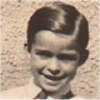 | Name: Richard Fawkes
Overview: Richard Fawkes` father worked as a railway engineer in Argentina and Richard was brought up in an expatriate British community. His father died during the war, and he returned to England in 1945 to work in the family firm. He shared a house with his mother and sister for many years, but has lived alone since 1980. He has sung in amateur musicals, renovated houses, including the one in which he now lives, and painted 1,600 paintings, most of which he has sold. He is currently recovering from a heart attack.
Hits=2 |
|
| 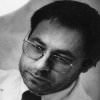 | Name: Laurie
Overview: Laurie first encountered diabetes through his grandmother, whose leg was amputated as a result of the disease. In 1976, he gave up his job in industry to train at the Cardiff School of Chiropody. He worked in the community and at the John Radcliffe Hospital before joining the Oxford Centre for Diabetes, Endocrinology & Metabolism in 1988. Since then he has acquired a BSc in Podiatry and an MSc from the Wound Healing Research Unit in Cardiff. He is now Oxfordshire`s Clinical Lead for the Diabetic Foot and runs the Diabetic Foot module for Warwick University`s MSc in Diabetes.
Hits=2 |
|
|
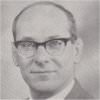 | Name: Joe Needoff
Overview: : Dr. Joe Needoff was a GP in an old-established Black Country practice from 1951 to 1989. He had a few, mainly elderly, patients with diabetes, but issued very few prescriptions for insulin and never saw a young person with diabetes. At first he had no nurse to help him, so did urine tests himself and, when he needed a chaperone, he called on his wife or another patient. The waiting-room was often crowded, as there was no appointment system. He saw no increase in diabetes throughout his career and had no diabetic clinic: ‘there was no necessity for it.`
There is also an interview with another Black Country GP, from one generation later, Dr. Richard Gee.
Hits=1 |
|
| 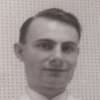 | Name: Alex Wright
Overview: Dr. Alex Wright was Senior Lecturer and Honorary Consultant at Birmingham from 1973 to 1997, mostly at the General Hospital and latterly at the University Hospital, Selly Oak. He is now Honorary Senior Lecturer and works part-time at Manor Hospital, Walsall and Heartlands Hospital, Birmingham. He has also seen private patients on Saturday mornings for over 25 years. He has published on many aspects of diabetes and was part of the policy advisory group for the UK Prospective Diabetes Study, a 20-year trial which showed that the life-threatening complications of type 2 diabetes can be significantly reduced by appropriate treatment.
Hits=1 |
|
|
 | Name: Joan Wilson
Overview: In 1954, Joan Wilson was appointed as a Diabetes Specialist Health Visitor by Dr. Joan Walker of Leicester Royal Infirmary, who believed that patients would benefit from being ‘taught how to live their lives at home`. As a fully trained nurse, she could claim to be one of the UK`s earliest Diabetic Specialist Nurses. She visited homes and gave patients her own home phone number; visited schools and workplaces; liaised with district nurses and GPs and provided patient education at the Infirmary clinics. She was involved in consultant-led clinics in smaller towns and in helping GPs to set up clinics.
Hits=1 |
|
| 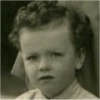 | Name: Simon Lawson
Overview: Simon Lawson`s father was 65 when he was born and his mother 44, and both died while he was in his teens. His unhappiness affected his public school education and he failed to get a place at Cambridge. Instead he worked at Sotheby`s in London and it was only after he married in 1971 that he obtained a degree and a doctorate – leading to his present work as an Oxford University librarian. He has warm memories of being treated by two eminent consultants – RD Lawrence and John Nabarro – and has always enjoyed knowing as much as possible about diabetes.
Hits=1 |
|
|
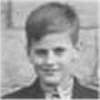 | Name: Peter
Overview: Peter`s father was a professor and both parents were well-informed about diabetes after his older brother was diagnosed in 1945. They spotted Peter`s symptoms early and at first he only needed four units of Lente insulin to last 24 hours. He was educated at Oxford and worked in the steel industry for several years. He is now a management consultant and has few problems associated with diabetes. He has recently remarried, after being widowed in 2003, and has a daughter with diabetes who is `much more able to cope with disturbances to her daily routine than I am`.
Hits=1 |
|
| 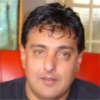 | Name: Mr. Baghria
Overview: Mr. Baghria`s parents are Sikhs who came from India in the 1950s; his father worked as a galvaniser in a factory. His parents` aim was that he should have a good education, but his own dream was to become a truck driver. He married young and he and his wife saved to buy his HGV licence. Not long afterwards, he was diagnosed with diabetes and his licence was revoked. He appealed and managed to get it back, on condition that he had a yearly medical - and he has been driving all over Europe ever since.
Hits=1 |
|
|
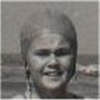 | Name: Victoria
Overview: Victoria`s father was a bank manager and she attended a private school and a grammar school. At 16, she developed an eating disorder after a boyfriend dropped her because she was diabetic, and at 25 she briefly rebelled against her diabetic diet. Otherwise, she feels diabetes has caused few problems and hasn`t prevented her from achieving her ambition of becoming a teacher. She thinks perhaps it did influence her not to have children, but she enjoys life with her partner, and is grateful for new blood testing equipment and other developments which have given diabetics greater freedom.
Hits=1 |
|
| 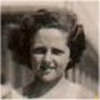 | Name: Ann
Overview: Ann came to England in 1945, and was diagnosed when the matron at her boarding school found her drinking the bath water. Her mother had worked as a nurse at Kings Hospital, London, and took her daughter there, to be treated by R.D. Lawrence (co-founder of the British Diabetes Association, now Diabetes UK). She has memories of being made to go into a hypo, of glass syringes, thick needles, and embarrassing urine tests. She worked as an occupational therapist, and brought up two children alone. Despite eyesight problems, she now makes a living as an artist.
Hits=1 |
|
|
| Search returned 29 matches |